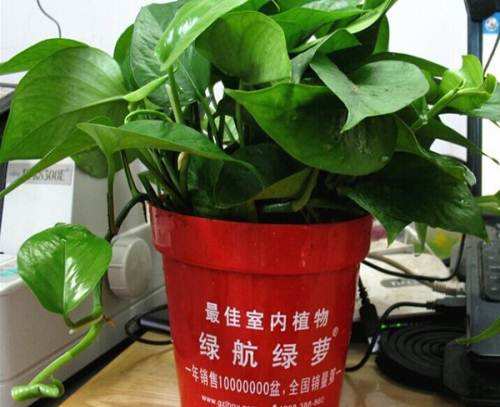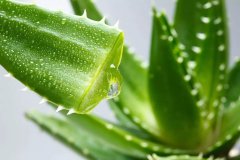Detailed maintenance methods of green pineapple in green navigation: culture methods and attention of green pineapple
The following are the detailed maintenance methods of green pineapple:
Green pineapple, also known as Pueraria lobata, is a perennial evergreen vine of the genus Araceae. Native to the tropical rain forests of the Malay Peninsula of Asia and Brazil of South America.
Green pineapple, as a shade-tolerant foliage plant, is very suitable for indoor cultivation and ornamental. It is a rare indoor potted foliage plant.

1. Selection of flowerpots for green pineapple culture
(1) flowerpot requirements: muddy flowerpots, plastic pots, porcelain pots and pottery pots can be used for cultivation. If you want to hang cultivation, you should choose a flowerpot with hooks.
(2) flowerpot size: according to the plant shape of green pineapple, it can be planted in a pot with a diameter of 14-34 cm.
two。 Pot soil and pot method of green pineapple culture
The pot soil for the cultivation of green pineapple should be mixed with 3 rotten leaf soil, 3 garden soil, 3 river sand and 1 barnyard manure. When the root system of the underground part of the green pineapple seedlings propagated by cuttings grows to about 5 cm, and the shoot of the aboveground part grows to 5-7 cm, it can be planted directly in the pot. Three seedlings are planted in a triangle with a diameter of 33 cm in a glazed basin, which is easy to form a plant shape.
After putting on the basin, put it in the ventilation shade to avoid direct sunlight; spray water 3 or 4 times a day to increase air humidity and keep the basin soil moist. After the seedlings resume their growth, they can be transferred to normal maintenance and management. The young plants can change the pots once a year, and the adults can change the pots every 1-2 years.
3. Watering method of green pineapple culture
Green pineapple likes to be wet, and the basin soil should be kept moist in spring, summer and autumn. The basin soil is easy to turn yellow if the leaves are too much. But too much watering causes stagnant water, which can lead to rotten roots and withered leaves. Generally, water is watered every 2-3 days in spring and late autumn, and once a day in summer, and water is often sprayed on the leaf surface and the ground around it to increase air humidity and make the leaves bright green. Watering should be controlled in winter, and the surface of the basin soil should be watered after it is dry; on the contrary, too much watering and too wet basin soil will reduce the cold resistance and cause yellow leaves and rotten roots. In winter, the leaves can be sprayed with warm water every 3 to 5 days to keep the leaves bright and green.
4. Fertilization methods for green pineapple culture
Green pineapple grows faster, and topdressing should be strengthened in the growing season. Topdressing should be based on nitrogen, and nitrogen, phosphorus and potassium fertilizer should be applied together. 0.1% urea and 0.3% 0.5% diammonium phosphate can be used, or 0.1% 0.2% urea solution and 0.1% potassium dihydrogen phosphate liquid fertilizer can be applied. 15%-20% mature cake fertilizer can also be applied. Topdressing is applied every 10 to 15 days from spring to early summer; the Summer Solstice is topdressing every 20 days in early autumn; and every 10 to 15 days in autumn; instead of topdressing the basin soil in winter, it is only necessary to spray leaves with 0.1% 0.2% urea solution every 20 to 30 days to make the leaves green and bright.
5. Light requirements of green pineapple culture
Green turnip bogey in direct sunlight, should be maintained under semi-overcast or scattered light conditions. It is suitable for indoor cultivation. Generally in spring, summer and autumn, green pineapple can be placed in the north or east window, and in winter in the south window, cultivate green pineapple outdoors, avoid direct sunlight, especially in summer, otherwise it will burn the leaf edge, make the new leaf smaller, and the leaf color is dim and dull. Outdoor maintenance can be placed in a well-ventilated shade shed, and the light transmittance of the shade shed is about 50%.
6. Modeling method of green pineapple culture
In order to better improve the ornamental effect of green pineapple, it should be modeled properly.
(1) column type
A stick or bamboo pole with a height of about 1 meter and a diameter of 5 centimeters was erected in the center of the flowerpot as a pillar, which was wrapped in brown skin. 3-5 green pineapple of similar size after cuttage rooting was planted around the column for faster shaping. With the growth of green pineapple, it is necessary to guide its stems in time so that the new roots on the stem nodes are adsorbed on the column. At the same time, attention should be paid to make the green pineapple on the column grow plump, distribute uniformly, and form a green cylinder.
(2) sagging type
2-3 green pineapple plants were planted in the pot, suspended and placed on flower racks or on indoor heights. With the growth and development, the stems and leaves droop along the basin mouth, and then the branches and vines can be pruned to sprout new branches to make the plant shape fuller.
7. Matters needing attention in green pineapple culture
(1) the leaves turn yellow and fall off, and the stems rot: mainly due to too much watering, especially in winter. Green pineapple requires good permeability of basin soil and avoid stagnant water in the basin. If you find this situation, you should change the basin in time.
(2) the leaf tip is curled and brown: mainly because the air is too dry, it should be sprayed to the leaf surface frequently.
(3) the leaf margin turns brown and withered yellow spots appear on the leaves: they are not watered enough in the growing season and the basin soil can not be completely dried before watering. Totem pole plants should be careful to wet the posts when watering, because some roots grow on the posts.
(4) the leaves become smaller: green pineapple must always keep the top and grow upward when it is cultivated as a totem pole, as long as it bends downward, the leaves will gradually become smaller; fertilizer or light is insufficient.
(5) the leaves become soft and curved, and the stems rot: due to the low temperature, the green pineapple is very sensitive to the low temperature below 10 ℃.
8. Propagation methods of green pineapple culture
Green pineapple is often propagated by cutting. There are two kinds of stem insertion and leaf insertion.
(1) stem insertion of green radish
It is usually carried out in spring and autumn. It is intended to select annual branches with bright leaves, thick leaves and strong growth, and cut the stem with about 15 cm long and 2-3 nodes as cuttings. Don't hurt the root when cutting cuttings. After cutting, the cuttings should be inserted into the plain sand in time, the depth of the cuttings should be 1 to 3, and the cuttings should be watered and placed in a shaded place, or the cutting seedbed should be shaded. Spray water to the leaves twice a day, often keeping the soil and air moist. In the temperature above 25 ℃ and semi-overcast environment, rooting and long leaves can take place in about 15-20 days.
(2) Green radish leaf insertion
The method of leaf cutting is to use green pineapple leaves to cut. The advantage is that it does not destroy the plant shape. The method is to select the strong leaves in the middle and upper part of the branch, cut them from the base of the petiole with a knife, and then insert them into the water or matrix. Water inserts and takes root quickly, so it is suitable for families to reproduce in a small amount. When inserting, the depth of the petiole should be 1-1.5 cm. Too shallow, if the water evaporation does not replenish the leaf wilting in time; too deep, the petiole is easy to rot. Change the water once 5-7 days after insertion, and it can be planted in about 50 days. The cutting substrate should be mixed with fine sand and slag, and the substrate should be disinfected with exposure or ironing with boiling water before planting. Stick a hole with a bamboo stick when inserting, so as not to hurt the petiole, pour water after insertion, and pay attention to humidity and ventilation. Leaf insertion and germination is slow, which takes about 6-7 months.
Cuttings can also be propagated by water cuttings. Insert the cuttings into the water and plant them after taking root.
- Prev
There is no cure for Huanglong disease! Learn these three tricks to make Huanglong disease have nowhere to hide.
On May 22, I went to Guilin to participate in the sugar orange planting exchange meeting. I gained a lot, learned a lot of new knowledge, and met many citrus technology giants and growers. However, it is surprising that there are still people preaching Huanglong disease on such a serious occasion.
- Next

Aloe Vera How to raise_Aloe Vera cultivation methods and precautions
Aloe detailed maintenance methods: aloe leaves hypertrophy, pure green or with stripes, long lanceolate, apex sharp, leaf margin spiny or entire margin, clustered on the stem, spiral arrangement. Racemes sprouting from leaf clusters, erect upward, pedicels higher than leaves,
Related
- Fuxing push coffee new agricultural production and marketing class: lack of small-scale processing plants
- Jujube rice field leisure farm deep ploughing Yilan for five years to create a space for organic food and play
- Nongyu Farm-A trial of organic papaya for brave women with advanced technology
- Four points for attention in the prevention and control of diseases and insect pests of edible fungi
- How to add nutrient solution to Edible Fungi
- Is there any good way to control edible fungus mites?
- Open Inoculation Technology of Edible Fungi
- Is there any clever way to use fertilizer for edible fungus in winter?
- What agents are used to kill the pathogens of edible fungi in the mushroom shed?
- Rapid drying of Edible Fungi

